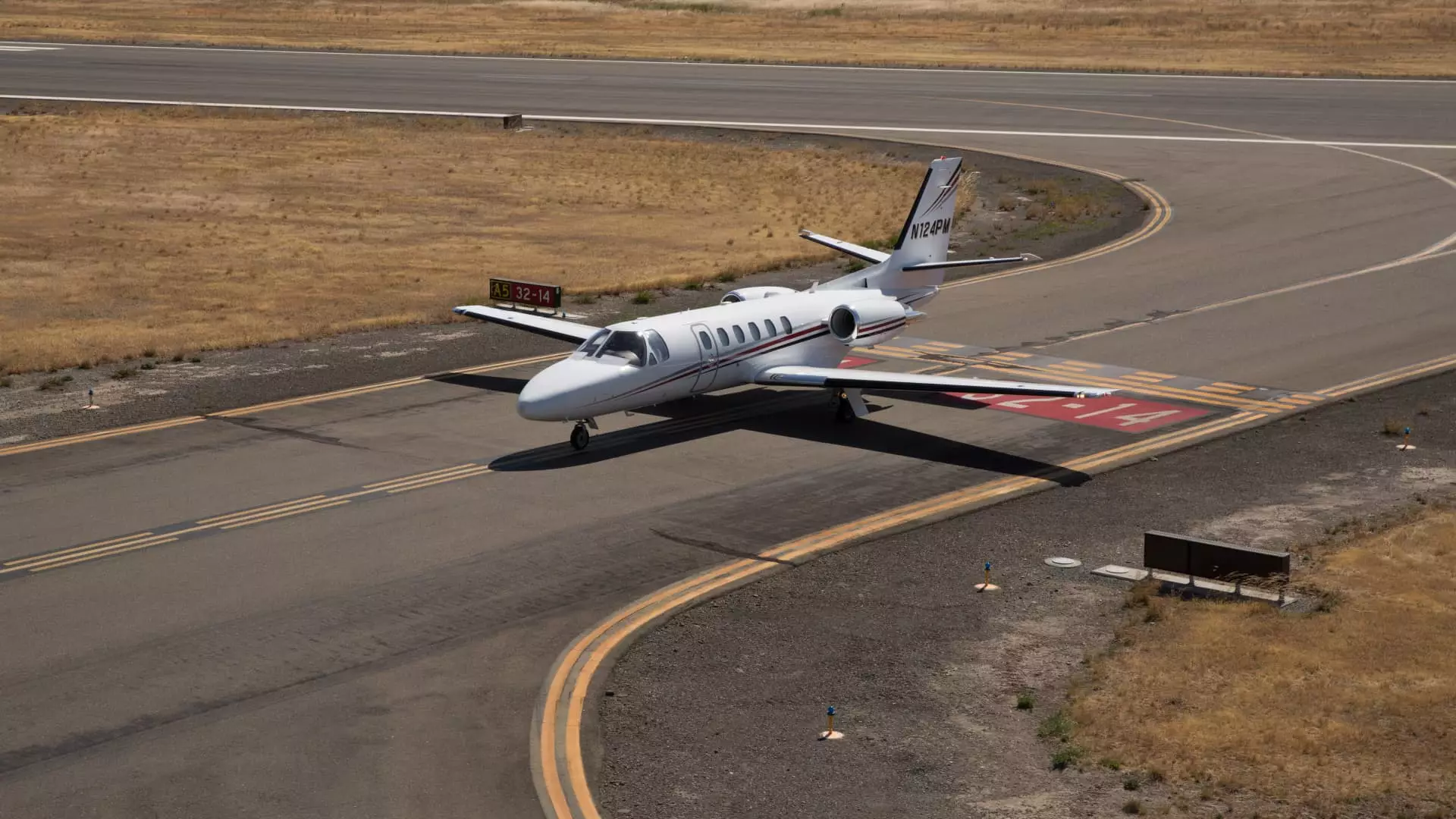In an economy where consumer confidence seems to be fading like a summer sunset, the ramifications can be profound, as evidenced by the aviation sector’s latest downturn. A recent Barclays survey reveals that even the most affluent travelers, once unfazed by economic turbulence, are now reining in their spending. This paradigm shift indicates a concerning trend: a 49% drop in consumer interest regarding business jet purchases is not just a number; it’s a harbinger of potential stagnation in a market that thrives on a sense of security and affluent optimism.
What’s particularly striking in this context is the breadth of the decline. In a sample size of 65 brokers and financiers surveyed between April 9 to April 15, virtually every parameter monitored — aside from inventory levels — showcased a downward trajectory. The Barclays Business Jet Indicator saw a substantial decline from a score of 52 to 40; a 23% drop, the steepest in recent years. This sentiment echoes a broader unease characterizing today’s economy, leaving us to ponder the future for this once booming market.
The Nuances of Financial Health
Behind the numbers lies an intricate web of financial implications. The low 40s composite score signifies that aircraft manufacturers may not be performing at their expected capacity. Specifically, a score of 40 illustrates a worrying picture: the value of new orders is lagging behind fulfillment by approximately 10%. Such statistics resonate with the apprehension voiced throughout the industry—businesses are not merely pausing purchases; they are actively reconsidering future commitments in the face of tariffs and uncertain economic policies.
Barclays’ analyst David Strauss candidly shifts the blame onto external factors, admitting that while a deterioration in sentiment was anticipated, the extent of the decline came as a shock. This acknowledgment reflects a significant concern: consumer hesitance directly correlates with broader economic conditions and political turmoil. With 93% of survey respondents anticipating a detrimental impact from tariffs, the aviation sector’s health hangs in a precarious balance influenced by governmental decisions.
Stagnation or Opportunity? The Legislative Landscape
Despite the current malaise, a glimmer of hope flickers on the horizon. Legislative action may provide a much-needed boost to the beleaguered market. Recent developments in both the Senate and House of Representatives surrounding budget resolutions aim to extend key components of the Tax Cuts and Jobs Act. The act’s provision allowing businesses to immediately deduct 100% of eligible equipment purchases could prove transformative—should revisions successfully usher back the advantageous deduction rate.
Imagine a resurgence of demand as businesses regain their footing and confidence to invest in new aircraft; it could indeed re-energize the business jet market. However, the risk remains that such benefits will only serve as a temporary salve rather than a sustainable fix. The prospect of retroactive deductions might instigate a flurry of activity, but it raises questions about whether this is a viable long-term solution or just a delay before the inevitable reality of a constrained market surfaces again.
A Market Fragmented by Uncertainty
Respondents to Barclays’ survey voiced their unease with staggering clarity: nearly half reported that client interest has diminished while only a mere ten percent noted any improvement. The rhetoric surrounding tariffs hangs heavy, casting a long shadow over potential investments in both new and used jets. While one-third of respondents speculate that demand for secondhand jets may increase, the prevailing pessimism is rooted in real fears about the global economic landscape.
This begs the question: are we witnessing merely a passing phase of caution, or is this the new normal? Without meaningful resolution regarding tariffs and a clearer economic forecast, we may linger in this period of uncertainty, leading to stagnation in a market reliant on confidence and capital willingness. Business aviation is thus caught in an intricate dance, balancing the realities of legislative measures with the palpable apprehension that pervades the industry—not a sustainable state for growth.
In a world where volatile economic variables govern the terrain of business jet demand, the aviation sector stands at a crossroads, faced with choices fraught with risk yet brimming with potential. The outcome hinges not only on the decisions made in legislative halls but also on the broader social sentiment towards investment, travel, and what it means to pursue the skies amidst an epoch of uncertainty.

